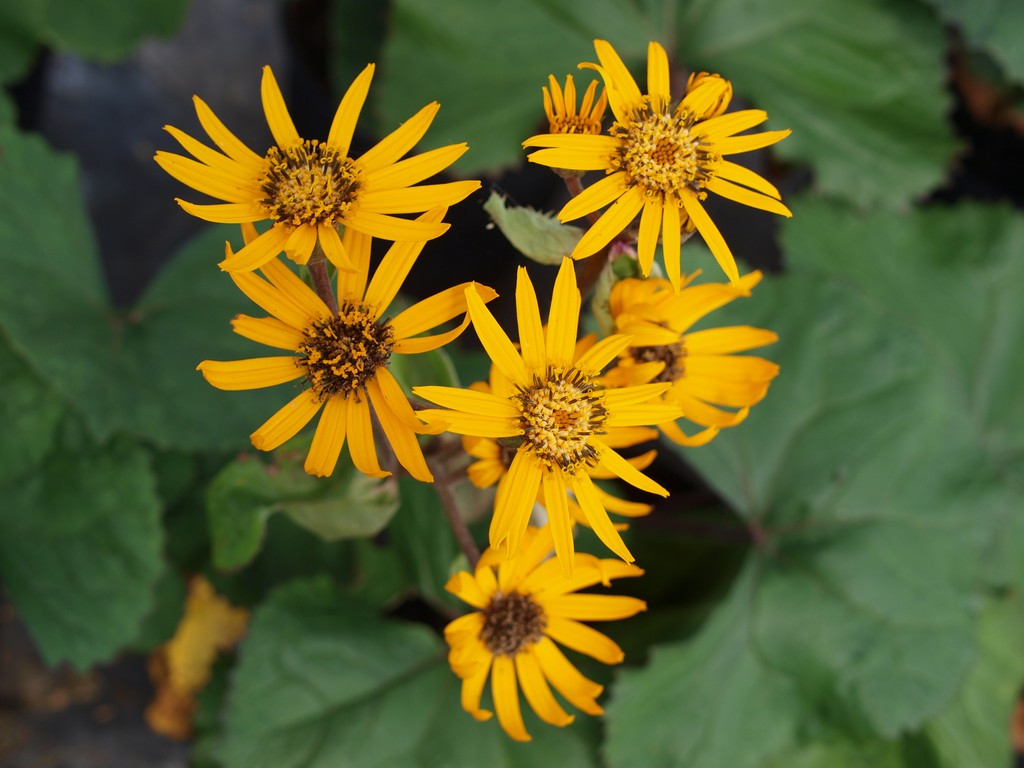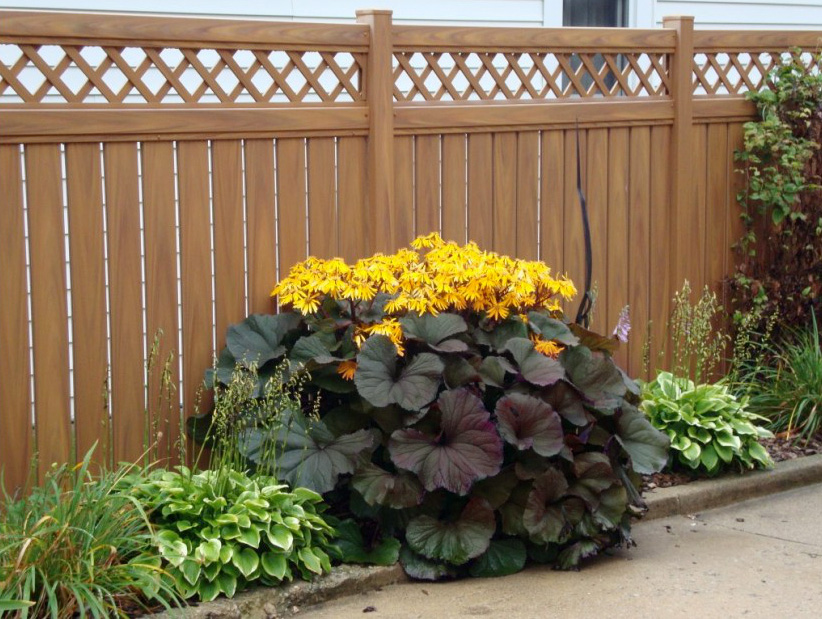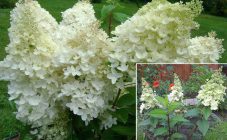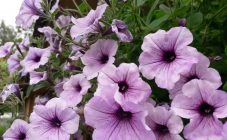Content:
Buzulnik toothed refers to perennial unpretentious plants. You should pay attention to Brit Marie Crawford. By choosing a place in the shade, you can provide a beautiful landscape on the site for the entire warm period.
Briefly about the flower
The Britt Marie Crawford Buzulnik is best planted in the shade. It will perfectly decorate the barn, draw attention to itself in any part of the flower garden, and beautifully settle down near an artificial pond. The plant is rather a tapeworm, so it is planted precisely in order to close the empty areas of the garden. The height of the bush reaches a meter. The leaves of the plant are large, dark brown on one side, and purple on the other.
The flowers of the toothed bush Britt Marie Crawford are yellow or orange for the reed variety, and brown for tubular plants. The inflorescence basket is small, collected in a shield.
The history of the appearance of the variety
Landscape design, made up of bright colors, is a rare phenomenon for central Russia. But even in these regions in the summer you can find yellow and orange inflorescences. It is believed that the homeland of Brit Marie is the Southwest of China. Even today, wild varieties of plants grow there. In Russia, near swamps, streams and lakes, you can find the Siberian species.
The name "ligularia" comes from the Latin word for "tongue". The inflorescence is a tightly packed petals with round edges, they look like tongues (hence the name).
The development of varieties began at the beginning of the 20th century. Every year a new species is brought out. We managed to obtain plants with excellent leaf shape and color. The Japanese plant a flower only for the sake of its beautiful decorative leaves.
Description of planting buzulnik
Plant the plant step by step in this way:
- They are planted in early spring, you need to dig up a bed with one shovel.
- The pits for the seedlings should be round with a diameter and depth of 40 cm.
- For each seat, you need to prepare a bucket of humus, superphosphate fertilizers and some wood ash.
- All components are mixed with the soil, and the seedling is inserted there.
- The root collar should be slightly above the ground.
- If the flower is "strong", then bloom can be expected in August.
If you have to plant a blooming buzulnik, planting is carried out in the same way, only you need to cut off the flowering twig and remove a third of the leaves.
How to care
Plant care is pretty simple. It can be planted in the shade, watered and it will delight with its appearance. If you want the buzulnik to show all his decorative features, then it is necessary:
- moisten the soil;
- feed.
The soil must be loosened and mulched. Make sure it is moist and loose. In order to spend less time loosening the soil after watering, it must be mixed with peat or humus. In dry summer, it is worth turning on the sprayer for half an hour early in the morning or in the evening.
Diseases and pests
Why doesn't the buzulnik bloom? Usually because its leaves are eaten by slugs.To combat them, superphosphate must be scattered on the ground. The plant also suffers from powdery mildew or other fungi. You can fight by spraying colloidal sulfur or ordinary potassium permanganate. With good care, you can see the plant bloom again.
Buzulnik is a kind of ornamental plant. The undemanding flower can decorate any corner of the garden with its exotic leaves with bright inflorescences.














